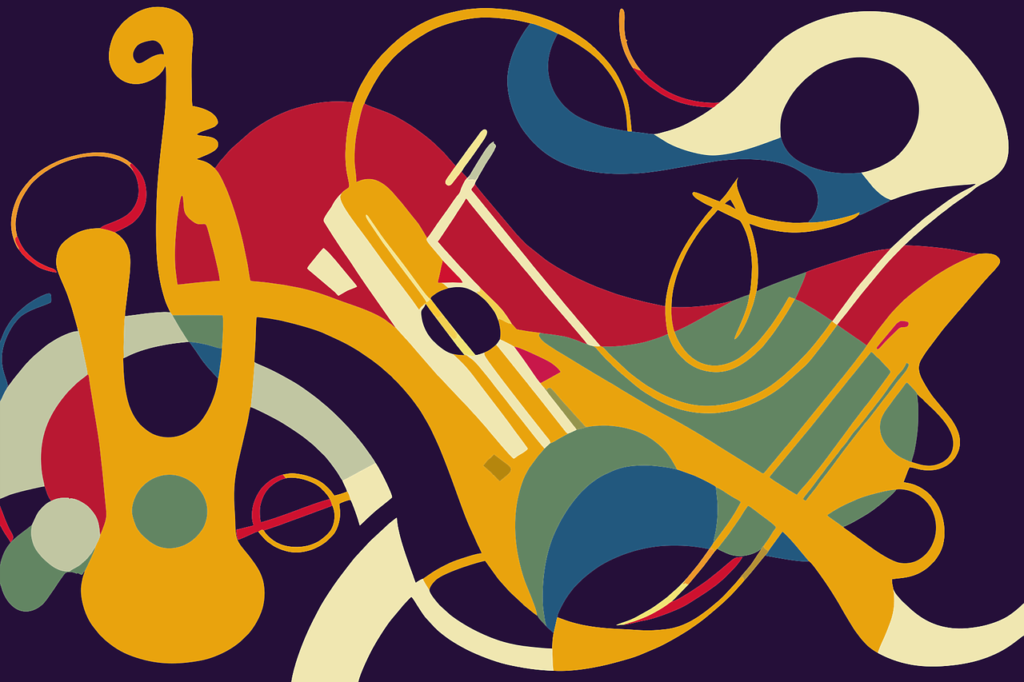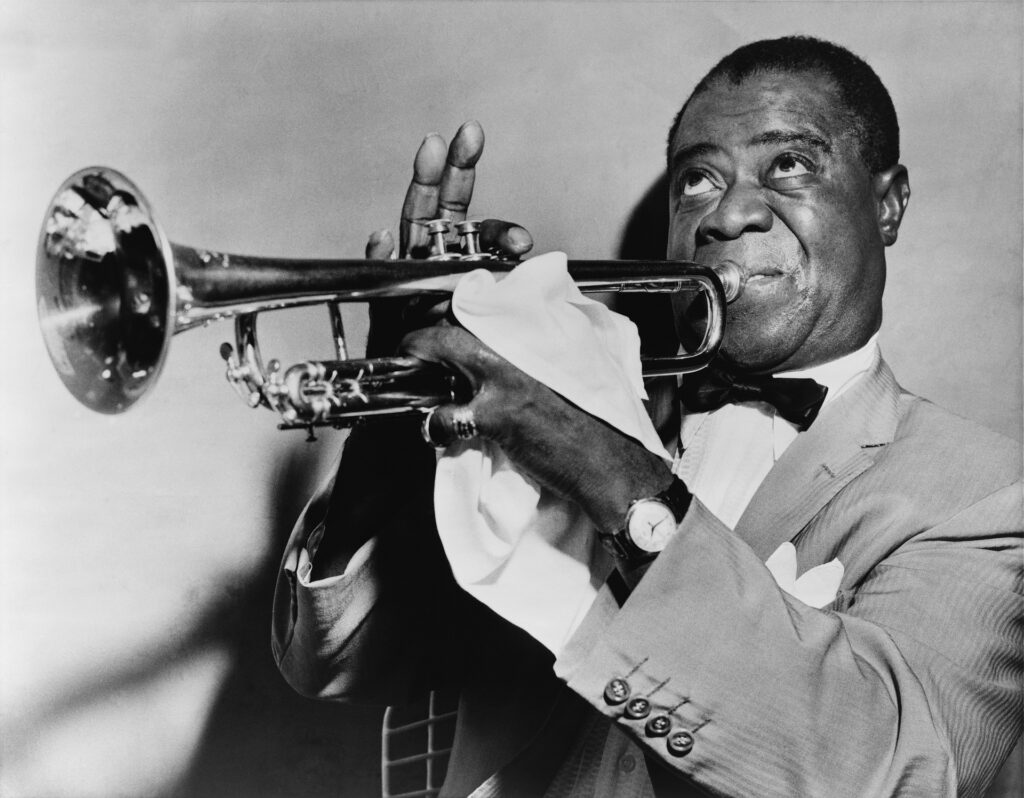Jazz Therapy-“Soothing the Soul”

Introduction
I am a licensed therapist with lifelong interests in Jazz, spirituality, and current events, especially civil rights and women’s, issues (which are more comprehensively human issues). This newsletter/blog is an effort to incorporate all of these subjects into a basic goal of leading a more meaningful and thoughtful life. Or, as the subtitle above more directly says, to sooth the soul. This will hopefully be accomplished via my personal comments and observations and recommended music selections and some background notes concerning the music.
The civil rights slant is because Jazz originated as a primarily black idiom and has remained so since its original inception among the descendants of African slaves (with, of course, many exceptions).
What is Jazz Therapy?
Jazz Therapy as defined here uses a 3-pronged approach, delivered as a weekly newsletter:
- Exploration and Analysis of a topic/theme/current event
- Listening to a specifically created jazz playlist with notes that that ties in with the topic or theme at hand
- A guided meditation lead by me that will help us to tend to all of our feelings about the event and empower us to continue onward in our lives
Jazz Therapy in a broader sense is a platform and website where we can digest events that happen in our lives and in the world, and find catharsis, solace, and upliftment in processing our emotions through listening to jazz, along with meditations. I started this website because I have often found myself feeling sad, angry, powerless, and hopeless listening to the news, after major events like the murder of George Floyd and Ahmaud Abrey and the recent overturning of Roe.V.Wade.
Like many others, I would often see the news and feel overwhelmed, hopeless, despairing, and uncertain of how to move forward in a healthy way. I would want to “turn it off” so that I didn’t have to think about it. Then, I would observe myself feeling this way and then I would feel guilty about it and feel stuck and powerless.
When I encountered such difficult, painful events in my personal life, I realized that I would try to reflect and analyze them as best I could, and then turn to jazz. Why not try this with current events, I thought? I realized that my way of handling these devastating news items/current events was to apply my psychologically minded way to make sense of things, meditate/or pray.
And then listen to jazz, of course.

I wanted to create a platform where I could psychologically explore what is happening in the world, or a theme or topic of interest, and then accompany this with listening to jazz music, which I believe is cathartic and beneficial. In addition, I wanted to offer meditations for people to help soothe and manage their emotions, and to offer them (and myself) a form of empowerment.
Why Jazz Therapy?
I have long wanted to do a website, with a blog and newsletter like this. Jazz is America’s indigenous art form, as it is the art form from Black America. Jazz is recognized around the world as high art. For myself, and many others, listening to Jazz is therapeutic. If I am feeling sad, overwhelmed, or anxious, I know from experience that if I put on some fitting jazz, like Ella Fitzgerald and Louis Armstrong duetting, I will feel better. Thus this website is called “Jazz Therapy,” since I believe that listening to Jazz is emotionally beneficial to the listener.
I hope that this program will be informative, expansive, uplifting, helpful, and fun for all. I want people to be able to have a way to process the news, current events, and relevant contemporary topics, have some incredible jazz to listen to (and thus get exposed to music they might not know, or if they do know, maybe hear it in a different way), and then have a meditation to tie it all together. I want jazz to engender self-reflection, and then self-awareness. I hope everyone reading this is able to hear this music and let it just wash over you, let it just be a soothing balm for your soul.
“Jazz music celebrates life-human life. The range of it. The absurdity of it. The ignorance of it. The greatness of it. The intelligence of it. The sexuality of it. The profundity of it. And it deals with all of its…it deals with it.”
-Wynton Marsalis
How Psychoanalytic Theory helps us understand The World
Psychoanalytic therapy is depth-oriented therapy, aimed at understanding root causes of someone’s suffering. I think a lot about emotions and what healing from psychological struggles and trauma look like due to my work as a psychotherapist where I practice from a psychoanalytic orientation.
In Psychoanalytic, Relational therapy, we:
-Think and talk about the relationship between the therapist and the patient, which can resemble relationships between the patient’s parents and the patient.
-Look at relational patterns and how they relate to their family.
-Look at the feelings that develop between the therapist and the patient.
-Talk about the influence of societal and cultural factors that influence an individual’s health.
-Look at parts of ourselves we have buried away, or not wanted to think about, or don’t know about (the unconscious mind)
-Talk about and explore dreams the patient has.
-Talk about anything the patient wants to talk about.
-Eventually enable the client to deal with their painful past experiences and traumas, grieve them, and then find newer, healthier, and freer ways of being in the world and in relationships
I say this up because I think psychotherapy is a very valuable form of exploring and healing oneself. Also, because I think that my psychotherapy training has helped me to be able to think about things on a deeper level, and that is what I hope to bring to the exploration and analysis of current events and topics here. Since I am a psychotherapist, we are going to explore the states of consciousness and the myriad emotions that we experience in listening to jazz from that perspective.

I also believe that listening to jazz can be innately healing in many ways. There have been times in my life where I was sad and down, and I put on some jazz, and immediately started to feel better. Or maybe I was just in an upbeat mood, and I felt like I wanted a piece of music to capture that, or I wanted to just be transported to another realm. Well, I could put on John Coltrane’s “Blue Train” and just feel joy, or I could put on Billie Holiday “Lady Sings the Blues,” and feel emotional resonance.
From my very personal perspective, when we seek to listen to jazz, our experience and what we seek can be categorized by the following 7 categories (I think there are many more; these are just the initial ones I came up with to organize my thoughts).
My 7 Categories of Listening to Jazz
1. Emotional Dwelling
This is when we seek to listen to music which mirrors our own emotional state. I did not coin the term for this category, though I am reapplying to the experience of listening to music. The first time I heard this term, it was in context to psychotherapy, explained as a therapeutic mirroring technique in which the therapist says something to the patient to deeply communicate that they are right there and have as much understanding and empathy as possible for the patient. However, emotional dwelling is much more than just showing empathy to another person. “Central in emotional dwelling is the therapist’s capacity to enter into a patient’s reality even while simultaneously holding to his or her own,” (https://www.tandfonline.com/doi/full/10.1080/10481885.2016.1123525). “Emotional Dwelling” as a term and concept was conceptualized by the relational psychoanalyst-philosopher Robert Stolorow, Ph.D. Dr. Stolorow gave an personal example to explain the concept of emotional dwelling. His father lost one of his eyes when he was a boy, and as a result, was intensely afraid of becoming blind. Dr. Stolrow explained that when his father was an elderly adult, he needed to have cataract surgery on his remaining eye one day, and was absolutely terrified. Dr. Stolrow elaborated:
When I went to see him just prior to the surgery, I found him in a massively (re)traumatized state—terrified, fragmented, disorganized, and deeply ashamed of the state he was in. Family members tried to offer him reassurance: “I’m sure it will be fine.” Really? Such platitudes only demonstrated to him that no one wanted to be close to him in his traumatized state. Having gone through my own experience of devastating trauma, I knew what he needed instead. I said, “Dad, you have been terrified of blindness for nearly your entire life, and there’s a good chance that this surgery will blind you! You are going to be a fucking maniac until you find out whether the surgery blinds you! You’re going to be psychotic; you’re going to be climbing the walls!” In response to my dwelling with his terror, my dad came together right before my eyes and, as was our custom, we had a couple of martinis together. The surgery was successful and did not blind him. (https://www.psychologytoday.com/us/blog/rethinking-mental-health/201602/robert-stolorow-emotional-trauma-and-psychoanalysis)
Our natural inclination is to see suffering and want to do something to fix it. Emotional dwelling is more than just showing empathy; it is authentically being and staying with someone in whatever state they are in.
Example: I went through a painful break-up in my early 20’s. I was just getting into Billie Holiday at the time, and somehow, I stumbled upon her version of “Good Morning Heartache.” I was still in anguish, but I felt that I was no longer alone with my pain. I would just close my eyes, and when I heard her sing that song, I felt I felt not so alone. I felt understood. I could feel the authenticity of her own pain coming through her lyricism.
2. Emotional Elevation
When we seek out a listening experience of jazz that falls into the category of “Emotional Elevation,” one desires to listen to a piece of music that will “cheer you up,” or shift your state of being to a higher vibrational state. This is listening to jazz when one simply wants to feel better.
Perhaps you had a breakup, or you had a conflict with a loved one, or you’re having a hard time at work, or your nerves are frayed, or you’re stressed over something that’s happening in the world. We want to be uplifted, nourished and fortified at the same time. For me, this goes along with one of my personal mantras that “If you listen to jazz, then everything will be better.”
Example: “Someday my prince will come,” by Miles Davis, which is just a song that gives me hope, or “It might as well be Spring” by Gene Ammons.
3. Emotional Reverie
This is a category when you want to listen to jazz to almost get lost in your own memories, or daydream, or fantasize as we call it in Psychoanalytic psychotherapy. Sometimes we might unconsciously seek out or find that our experience falls into this category only after we hear the music. What does that mean? For example, we might be listening to a song, and then find that we have some daydreams (reveries) arise, or we might find ourselves basking in memories of other times in our lives, happy times, sad times, in-between times.
Example: “Soul Blues,” by Coleman Hawkins. This song reminds me of Christmas time with my family, as we always had this on during Christmas. The association is one of connection to my loved-ones.

4. Emotional Transcendence
This is the category when you are seeking to have an experience of jazz to totally open up your mind, your body, your consciousness, and your heart, perhaps even connect you to the Divine. This is when you want to listen to jazz and have an expansive, immersive experience that will bring you to a higher realm. I think for me, it’s kind of a feeling of wanting to be expensive and like feel a greater sense of connection with the universe, with the Creator, or God. When you seek to have an emotionally transcendent experience listening to jazz, you may feel goosebumps and feel a sense of reverence for life.
Example: “For All We Know,” by Keith Jarett and Charlie Haden from the absolutely gorgeous 2011 album entitled “Jasmine.” And that this is one of those songs where it’s I mean you are sort of transported to the realm of the heavens.
5. Emotional Tone-setting
This is when we listen to jazz to create a certain mood, like a romantic, happy, or sad/bluesy vibe. This might be at the end of a long day, like when we want to come home, maybe pour a glass of wine, and put on some music to set a relaxing tone.
Example: You are hosting a party, and you want to put on upbeat, ebullient, fun music. Frank Sinatra, Ray Charles, or Cannonball Adderley come to mind.
6. Emotional Galvanization
This is when we listen to music to inspire us, or when we listen to music that contributes to us taking action on something:
Sometimes, this might be listening to music to dance. It could inspire you to go create, to go make love, to go out and listen to live jazz. Listening to a song that falls in this category might inspire you to cook, or paint, or take on a creative project. A song in this category might make you want to go protest, to go out and get involved in your community.
Example: “Mississippi Goodman,” Nina Simone. This song expresses outrage over racism, and there is a call to action implicit.
7. Emotional Expansion
This is for when we want to just experience something completely new that we’ve never heard before. Improvisation has always been and is still a big part of jazz. So sometimes we want to hear jazz because we want to hear inspiration and we want to hear something novel. When we hear newness, something opens up within us the possibility to explore realms of ourselves that we’ve never explored before.
Example: Anything by Charlie Parker. Wynton Marsalis and his interpretation of the jazz standards as well.
These 7 categories are just some of the divisions that a of jazz piece can fall into, based upon how we are feeling and what we are projecting onto the music. I might think a song belongs in the “Emotional Elevation” category, and you might be listening and think “Wait, maybe it’s more emotional transcendence,” or “I actually think it’s Emotional Reverie.” There can be overlap and that is to be expected. The 7 categories of listening to jazz is a fun and nerdy way to provide some framework for us to reflect on the beautiful jazz we hear, and then ultimately, ourselves.
The historical context of Jazz: From Slavery to Civil Rights
Jazz is an art form that originated from African-Americans slaves. From 1619 to 1865 (see “The 1619 Project,” https://www.nytimes.com/interactive/2019/08/14/magazine/1619-america-slavery.html ), chattel slavery was present on these shores. Black people were not even counted as people in the original constitution. Slavery and racism are inherently tied up in the foundation of the United States. Chattel slavery, where black people were considered property, left a traumatic and lasting effect on Black Americans, for generations of people and even to this present day. It also left a damaging effect on the psyches of white Americans, seen in the form of a perceived white superiority.
The vestiges of slavery are still with us today, in the form of systemic and institutional racism, and police violence against black and brown people. The trauma of slavery resulted in what we call trans-generational trauma, that is, the trauma of a previous generation, the effects of being violently oppressed and made to believe they were inferior, being passed down to subsequent generations (https://www.apa.org/monitor/2019/02/legacy-trauma).
Slavery was a widespread factor in the early economic prosperity of the United States, especially in the south. There is no question that free labor was very profitable. In 1860, the Northern states did not want to expand slavery further West into new states, and the South, of course, did, and also wanted to continue the institution of slavery. This conflict ultimately lead to the Civil War (https://www.pbs.org/opb/historydetectives/feature/causes-of-the-civil-war/).
After 1865 when the North won the Civil War, the 13th, 14th, and 15th Constitutional Amendments were ratified. The 13th Amendment freed the slaves and abolished slavery, the 14th made everyone born in the US citizens, so slaves finally received citizenship, and the 15th Amendment gave citizens a right to vote. These civil rights were briefly enjoyed by the newly freed slaves. However, post-Civil War in America was a transition time to a new era of racism and oppression. Reconstruction was a period of political crisis, rapid changes, and considerable violence. Reconstruction ended when the Union troops were withdrawn, and white supremacy was quickly reinstalled throughout the South. As a result, African Americans, would have few civil rights and little or no voice in government for years to come (http://projects.leadr.msu.edu/makingmodernus/exhibits/show/plessy-v–ferguson-1896/background–the-13th–14th–an)
After the Civil War, black people were commonly depicted in dehumanizing ways to the general public in popular entertainment. Minstrel shows featured “so-called plantation melodies, often derived from authentic black songs and spirituals but turned into formal compositions, by white and black songwriters, performed by blacked up whites. These shows, under the guise of entertainment for whites, continued to degrade and humiliate black people, showing them as simpletons and fools ((page 8, “Jazz,” Ward and Burns.) This is important to keep in mind, since this was a predominant image of black people that most whites had in their minds at the time, along with the idea that blacks were merely service workers, and that black women especially were sex objects to be exploited.
In 1896, the Supreme court case of Plessy v. Ferguson served a major blow to further strip Blacks of their civil rights, and their humanity. This case involved a very courageous man named Homer Adolph Plessy, who in 1892 challenged a state law that segregated blacks and whites on railcars. He was arrested, and the case eventually made it to the Supreme Court, which ruled that “separate but equal facilities were constitutional.” Plessy v. Ferguson thus legally cemented the doctrine of “separate but equal” for decades to come https://www.archives.gov/milestone-documents/plessy-v-ferguson)
1954, the Supreme Court ruled in Brown v. Board of Education that educational segregation was unconstitutional, bringing to an end the era of “separate-but-equal”. In 1964, President Lyndon B. Johnson signed the Civil Rights Act, which legally ended the segregation that had been institutionalized by Jim Crow laws. Yet this country continues to struggle with systemic and institutional racism, and both conscious and unconscious racial biases in the minds of many individuals.
I am iterating this brief history from the initiation of slavery in 1619 to the Civil Rights movement because it is so important and fundamental to understand the historical context in which jazz was birthed, since racism, segregation, and the resilience of Black musicians is inextricably linked to jazz. It is an art form created by Black Americans, which was created, evolved and thrived during this period of oppression and the period Jim Crow laws
Jazz and Civil rights are thus inextricably linked. All of the great jazz artists, like Louis Armstrong, Duke Ellington, Billie Holiday, Coleman Hawkins, Charlie Parker, John Coltrane, Miles Davis, Ella Fitzgerald, and many others were all creating their art in a background of racism and oppression. Louis Armstrong is arguably the most important jazz musician in the 20th century, which is why he is called “the father of Jazz”. In a June 23, 2020 NYT article entitled “Wynton Marsalis Finds Solace in the Optimism of the Blues,” Wynton says of Louis Armstrong: “…just the brilliance of his genius taught the entire world how to play and refuted the stereotypes of black people in his time” (https://www.nytimes.com/2020/06/23/arts/music/wynton-marsalis-jazz-favorites.html).

What I am saying is that jazz was an outlet for the pain and heartbreak that Black Americans endured, and for what was happening in the United States in terms of racism and oppression. Jazz musicians made art under a miasma of racism. Listening to jazz has always been therapeutic, in the sense that it can mirror feelings our states of feeling, and it can elevate the listener and by giving them something beautiful to listen to. I hope that this website will help you learn more about jazz, learn more about yourself, and leave you feeling spiritually bolstered.
So, thank you for reading this introduction to “Jazz Therapy.” Today, I aimed to cover the influence and context of Civil Rights on Jazz, and an ode to the fundamental beauty of Jazz itself. This initial offering is longer than what I anticipate future newsletters and posts to be since I needed to describe the basic background and intended purpose of the platform.
Sign-up!!! “Jazz Therapy” will launch as a free (for now) subscription newsletter in late October. Each week will feature reflection on a current event or topic, a meditation, and jazz playlist! Please join us and enter your information! Also, please leave us a comment and tell us what you think of this post and any thoughts you want to share. A sincere thank-you for you to be here.
Want to know more? Subscribe to our newsletter
interesting concept…
you might want to research the Nina Simone composition.
To my knowledge, the name of the tune (and with good reason) is “Mississippi Goddam.”
Thank you Owen for reading! Yes you are right re the title and song! 🙂